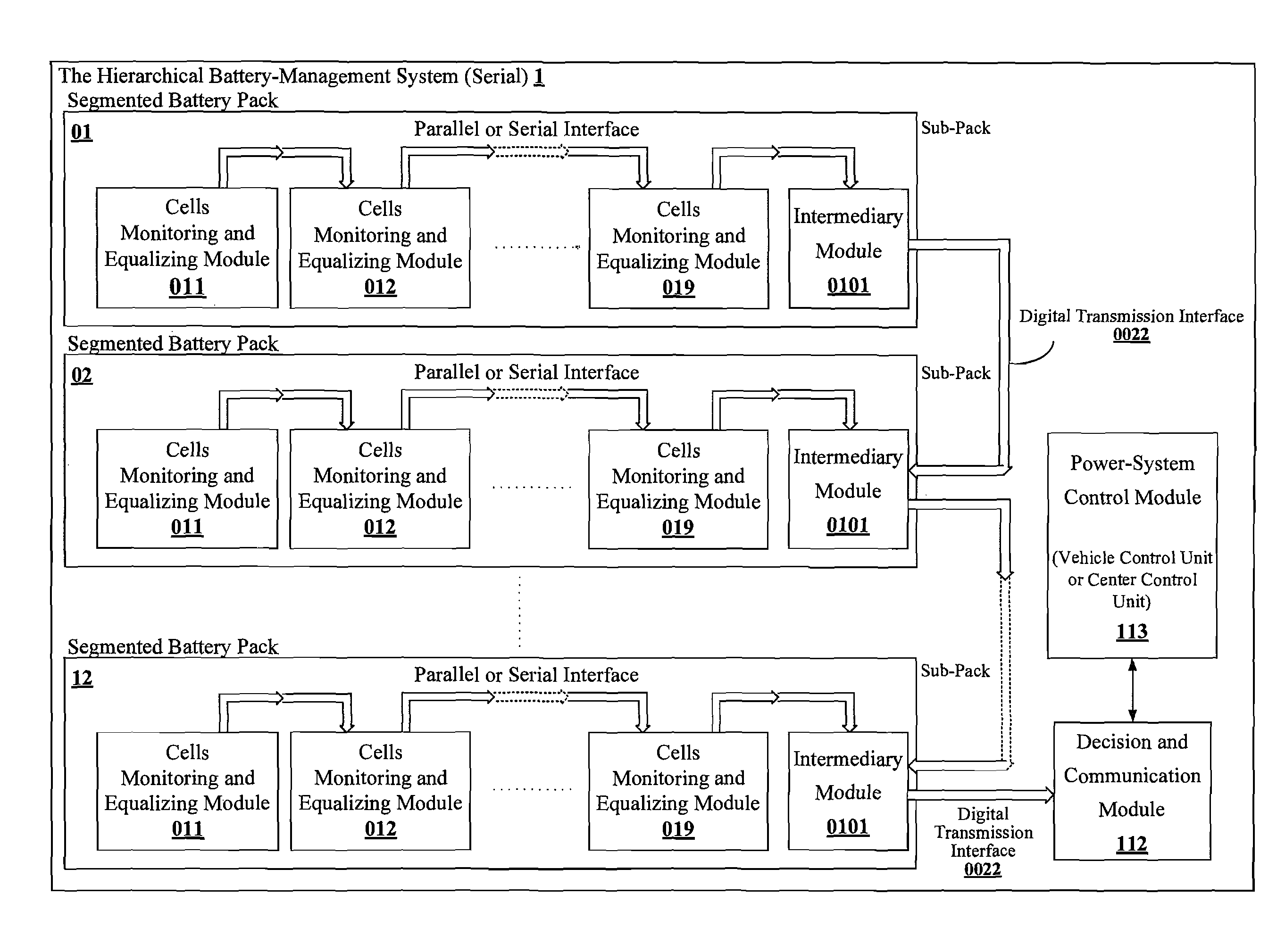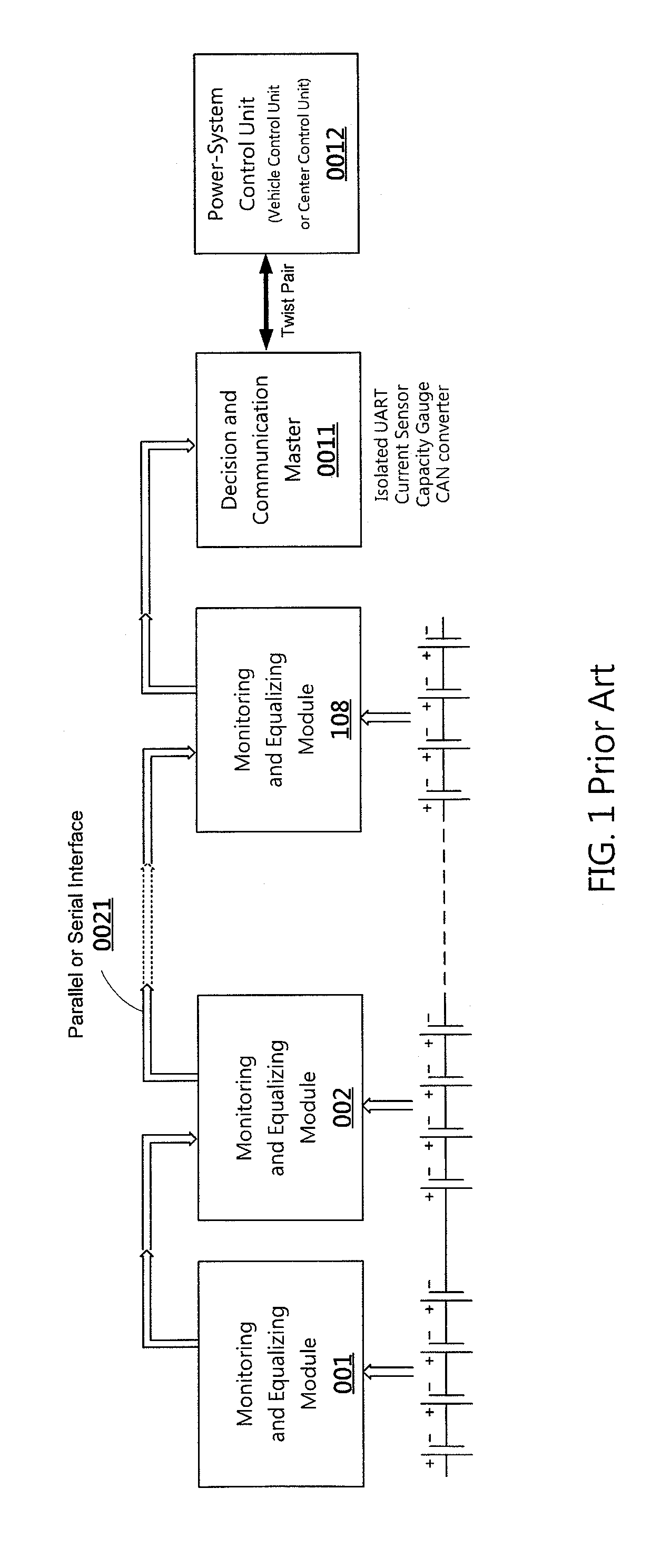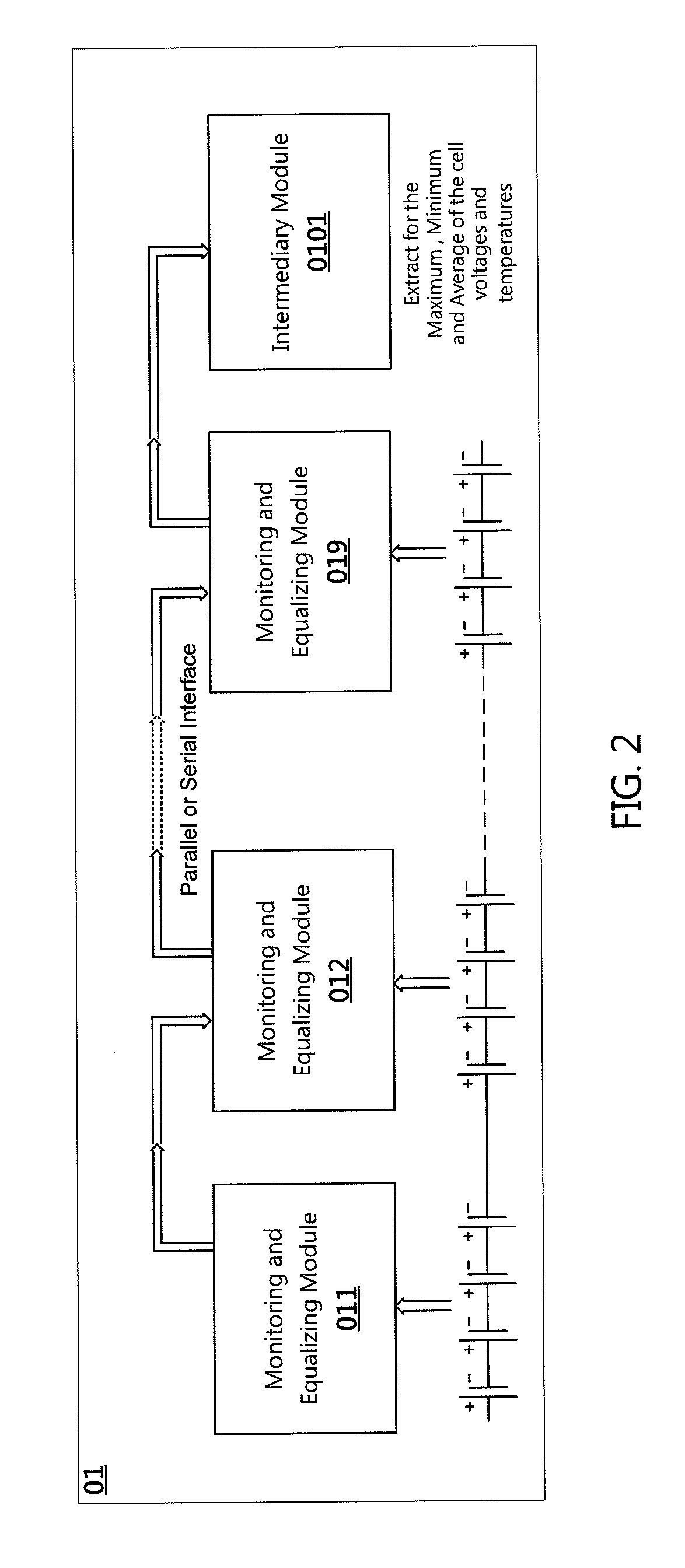Hierarchical battery management system
a battery management system and hierarchy technology, applied in battery/fuel cell control arrangement, safety/protection circuit, instruments, etc., can solve the problems of increasing the delay time of the battery management system, lithium based batteries having to deal with over voltage/low voltage problems, and high risk of exposure and burning, so as to reduce the amount of data required, speed up the decision process, and reduce the effect of tim
- Summary
- Abstract
- Description
- Claims
- Application Information
AI Technical Summary
Benefits of technology
Problems solved by technology
Method used
Image
Examples
first embodiment
[0033]Please refer to FIG. 3, which illustrates the hierarchical battery-management system (serial) 1, the hierarchical structure for managing the battery packs in serial configuration comprises:
[0034]For the sake of easy connection of signal cables, the digital transmission interfaces 0022 of the intermediary modules 0101 are also connected in serial configuration. Therefore, the first set of the twelve sets of segmented battery packs 01 couples its external digital transmission interface 0022 with the second set of the twelve sets of segmented battery packs 02 thereof, and so on, and the twelfth set of segmented battery packs 12 couples with the decision and communication module 112. The twelve sets of segmented battery packs (label 01, 02, 03 . . . 12) are coupled with one another sequentially, and with nine monitoring and equalizing modules and an intermediary module 0101 in each one of the segmented battery packs. The monitoring data of the battery cell is processed and screene...
second embodiment
[0037]Please refer to FIG. 4, which illustrates the hierarchical battery-management system, the hierarchical structure for managing the battery packs (connected in parallel configuration) comprises:
[0038]Twelve sets of segmented battery packs (label 01, 02, 03 . . . 12), each one group, the segmented battery packs (label 01, 02, 03 . . . 12) couples with the decision and communication module 112, with nine monitoring and equalizing modules (label 011 to 019) and an intermediary module 0101 in each one group, the segmented battery pack; the nine monitoring and equalizing modules (label 011 to 019) coupling with the intermediary module 0101 respectively. The intermediary module 0101 in each group gets and records all of cell voltages and cell temperatures in its group, screens the cell information to get the maximum, minimum and average of the cell voltages and temperature as its group status, and feeds its group status to the decision and communication unit 112. The decision and comm...
PUM
 Login to View More
Login to View More Abstract
Description
Claims
Application Information
 Login to View More
Login to View More - R&D
- Intellectual Property
- Life Sciences
- Materials
- Tech Scout
- Unparalleled Data Quality
- Higher Quality Content
- 60% Fewer Hallucinations
Browse by: Latest US Patents, China's latest patents, Technical Efficacy Thesaurus, Application Domain, Technology Topic, Popular Technical Reports.
© 2025 PatSnap. All rights reserved.Legal|Privacy policy|Modern Slavery Act Transparency Statement|Sitemap|About US| Contact US: help@patsnap.com



